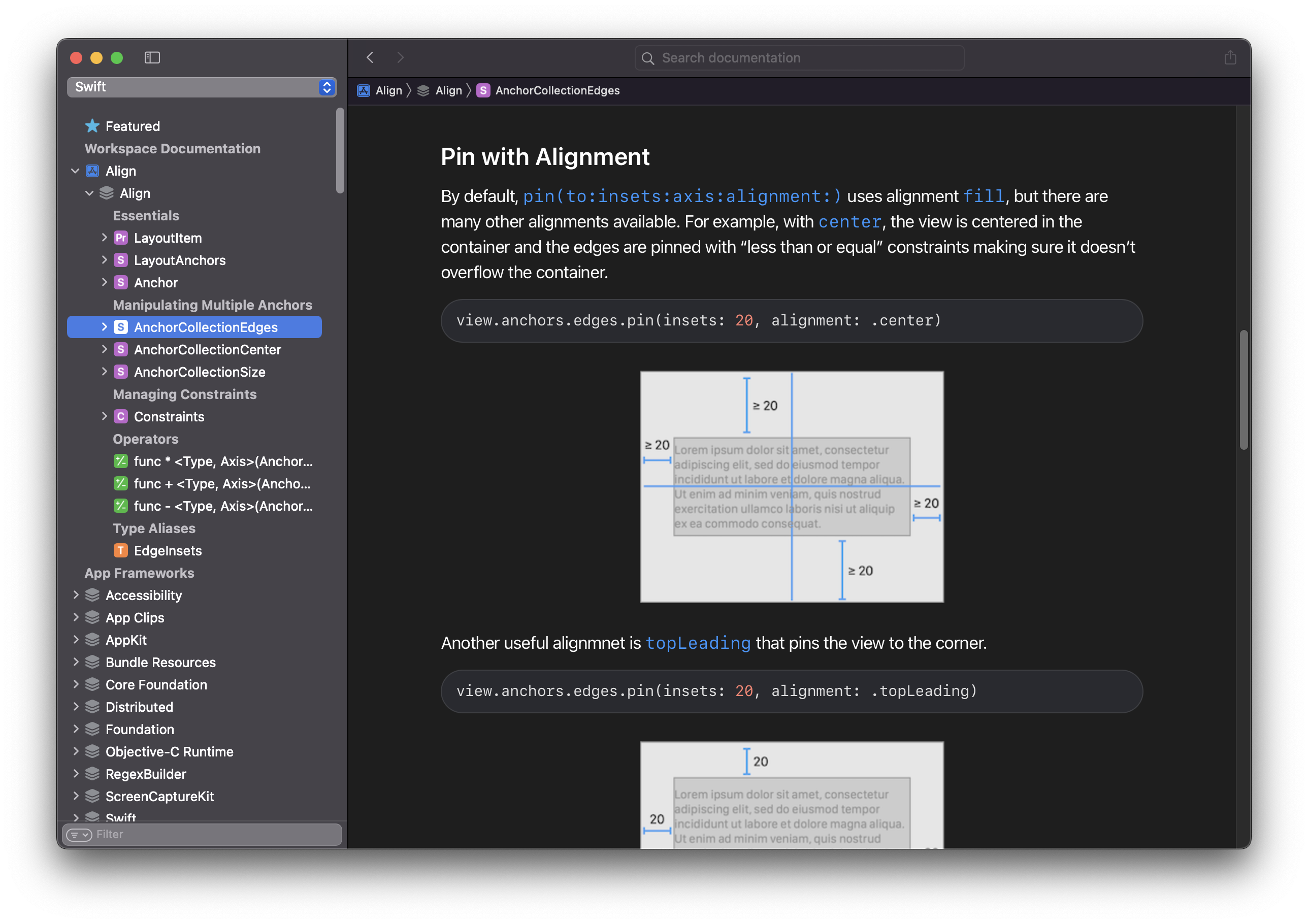Swiftpack.co is a collection of thousands of indexed Swift packages. Search packages.
See all packages published by kean.
kean/Align 3.2.0
Intuitive and powerful Auto Layout library
⭐️ 352
🕓 1 week ago
iOS
macOS
tvOS
.package(url: "https://github.com/kean/Align.git", from: "3.2.0")


The best way to create constraints in code.
- Semantic. Align APIs focus on your goals, not the math behind Auto Layout constraints.
- Powerful. Create multiple constraints with a single line of code.
- Type Safe. Makes it impossible to create invalid constraints, at compile time.
- Fluent. Concise and clear API that follows Swift API Design Guidelines.
- Simple. Stop worrying about
translatesAutoresizingMaskIntoConstraintsand constraints activation.
To give you a taste of what the semantic APIs look like, here is an example:
view.anchors.edges.pin(insets: 20, alignment: .center)

Documentation
The documentation for Align is created using DocC and covers all of its APIs in a clear visual way. There is also a cheat sheet available that lists all of the available APIs.

Requirements
| Align | Swift | Xcode | Platforms |
|---|---|---|---|
| Align 3.2 | Swift 5.8 | Xcode 14.3 | iOS 13.0, tvOS 13.0, macOS 10.15 |
| Align 3.0 | Swift 5.6 | Xcode 13.3 | iOS 12.0, tvOS 12.0, macOS 10.14 |
| Align 2.0 | Swift 5.1 | Xcode 11.0 | iOS 11.0, tvOS 11.0, macOS 10.13 |
Why Align
Align strives for clarity and simplicity by following Swift API Design Guidelines. Although most of the APIs are compact, it is a non-goal to enable the most concise syntax possible.
Align is for someone who:
- Prefers fluent high-level APIs
- Doesn't want to depend on big, complex libraries – Align has only ~330 lines of code
- Prefers to have as little extensions for native classes as possible – Align adds a single property:
anchors - Doesn't overuse operator overloads, prefers fast compile times
- Likes NSLayoutAnchor but wishes it had simpler API which didn't require manually activating constraints
GitHub
| link |
| Stars: 352 |
| Last commit: 1 week ago |
Advertisement: IndiePitcher.com - Cold Email Software for Startups
Related Packages
Release Notes
Align 3.2
1 week ago
- Remove deprecated
.baseproperty - Increase the minimum supported Xcode version to 14.3
- Increase the minimum supported platforms to iOS 13.0, tvOS 13.0, macOS 10.15
Swiftpack is being maintained by Petr Pavlik | @ptrpavlik | @swiftpackco | API | Analytics